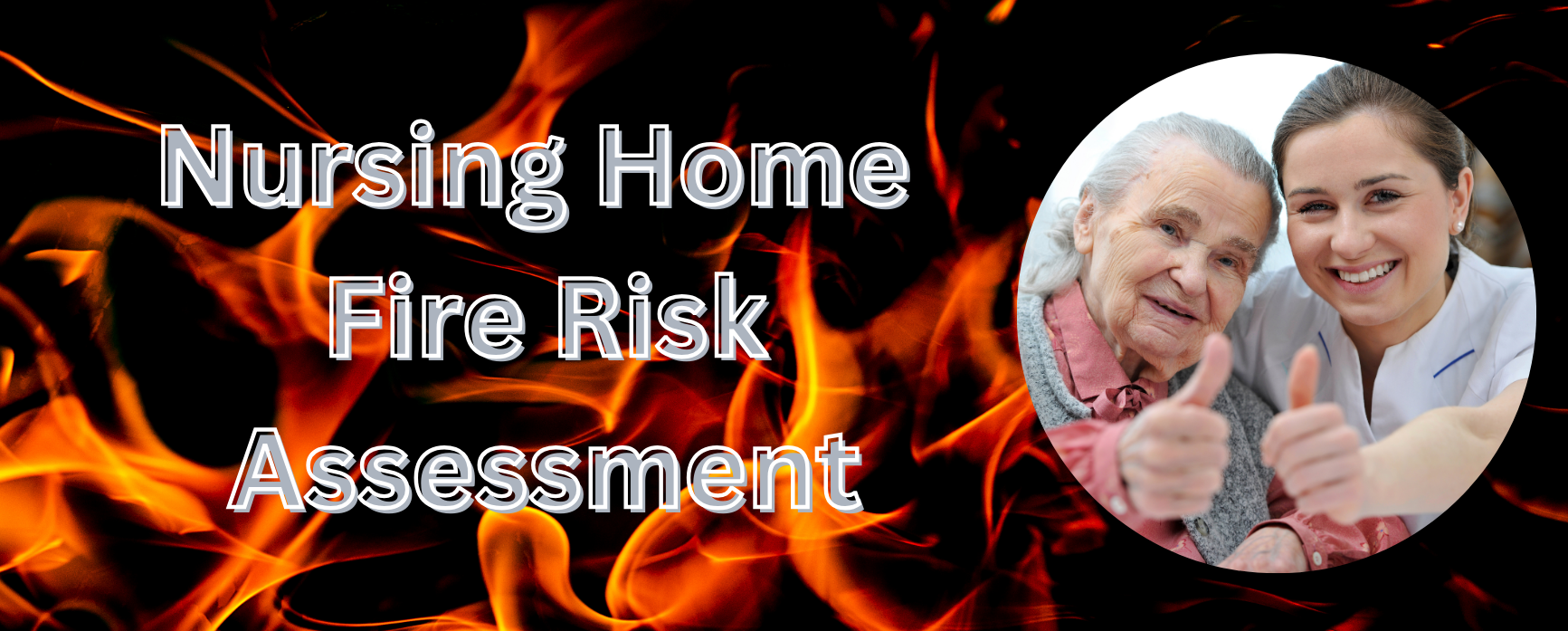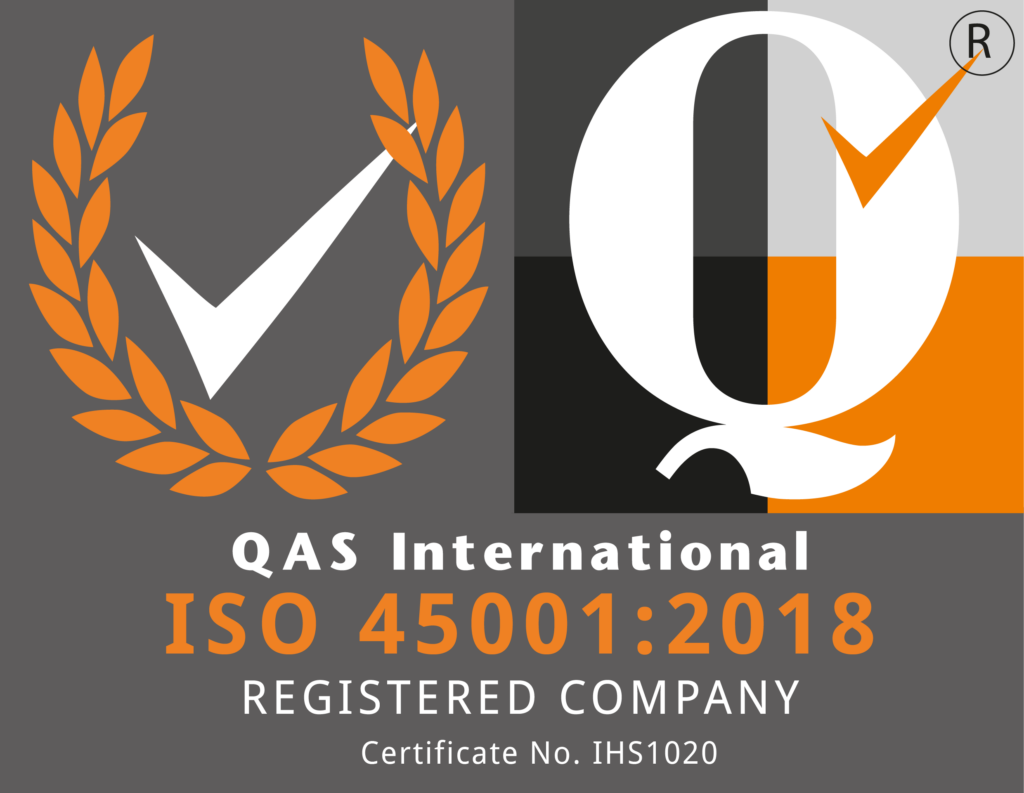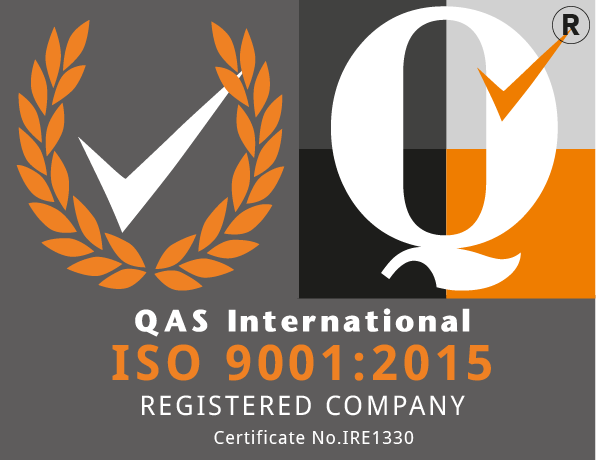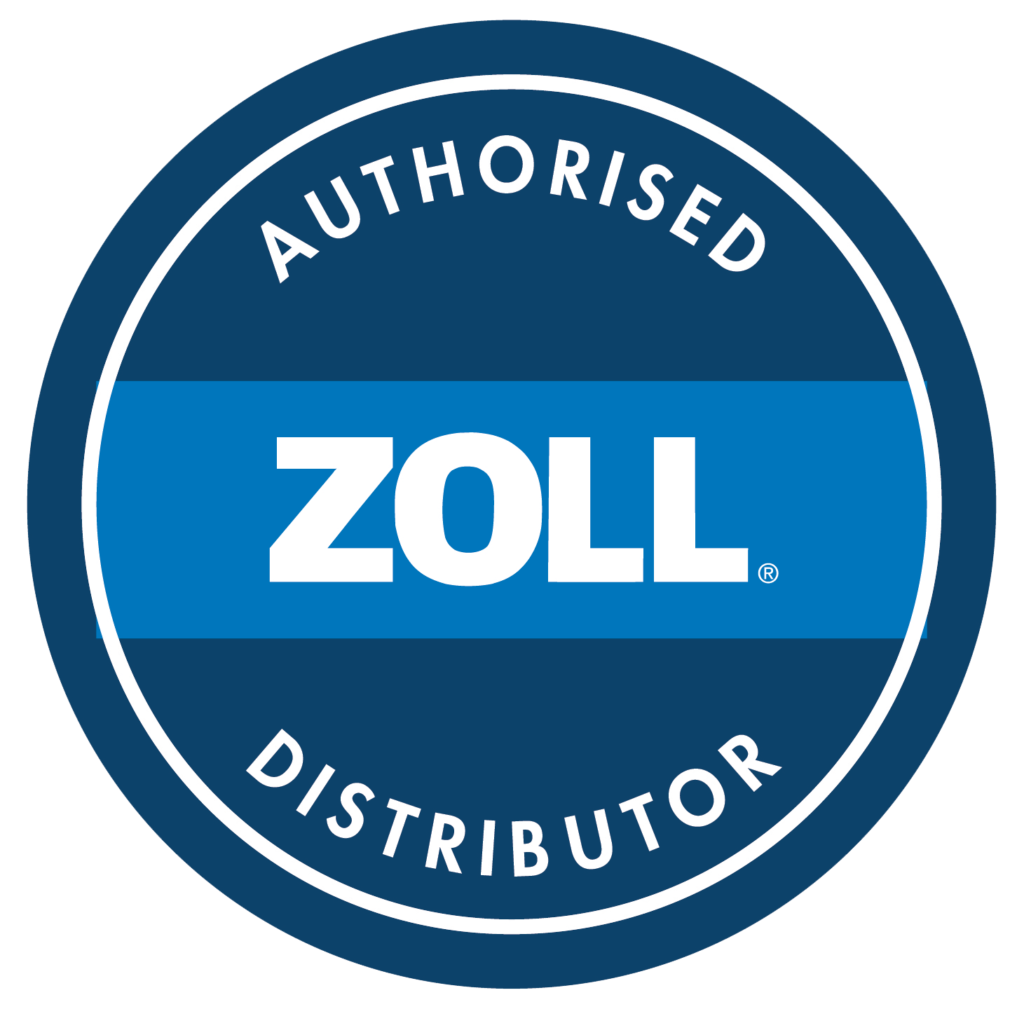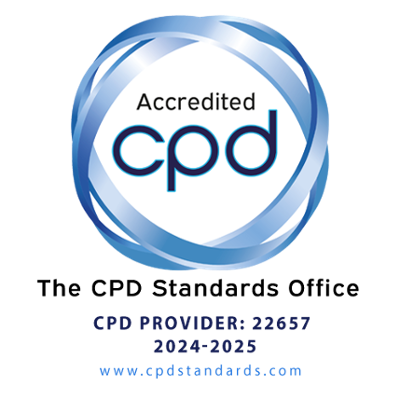Welcome to Phoenix STS: Experts in Nursing Home PAS-79-1 Fire Risk Assessments and Health & Safety Consultancy
At Phoenix STS, we combine industry-leading expertise with a steadfast commitment to fire safety excellence in nursing homes. Recognising the unique complexities healthcare facilities face, we believe fire safety management is more than a regulatory obligation—it is a moral duty. Our Nursing Home Fire Risk Assessment, conducted strictly in line with the PAS 79-1:2020 methodology, ensures your compliance with the Safety, Health and Welfare at Work Act 2005, the General Application Regulations 2007, and the rigorous standards mandated by the Health Information and Quality Authority (HIQA).
Entrust Your Fire Safety to the Specialists
Our highly skilled fire engineers at Phoenix STS are dedicated to ensuring that your nursing home meets the highest fire safety standards. Each assessment is thoroughly conducted by highly skilled fire engineers with extensive experience in healthcare environments, identifying potential hazards and implementing robust safety solutions. By choosing Phoenix STS, you gain peace of mind that your facility’s fire safety measures meet and exceed all regulatory expectations, comprehensively protecting your residents, staff, and property.
Competence and Comprehensive Professional Indemnity Insurance
Choosing a competent fire risk assessor with appropriate professional indemnity insurance is vital to safeguarding your facility. Engaging an uninsured or inadequately insured provider poses significant risks, including financial and legal exposure due to potential errors or oversights. Our team at Phoenix STS is fully insured with comprehensive professional indemnity coverage specifically tailored to fire risk assessments. This assurance provides accountability, ensuring your facility’s fire safety evaluation is conducted to the highest professional standards, fully protecting your interests.
Why a Nursing Home Fire Risk Assessment (PAS 79-1:2020) Is Crucial
Our specialised Nursing Home Fire Risk Assessment is designed explicitly to tackle the unique fire safety challenges in residential care environments. Following the robust PAS 79-1:2020 framework, our detailed evaluations ensure your premises are effectively protected from fire hazards. This rigorous process helps prevent injuries, minimise property damage, and support insurance compliance, safeguarding your nursing home’s operational continuity and financial stability.
Our Expertise, Your Assurance
With decades of dedicated experience in fire, health, and safety management within the healthcare sector, Phoenix STS delivers tailored solutions specific to nursing homes. Our dedicated team of qualified safety professionals supports you from the initial fire risk assessment through ongoing management and continuous improvement of your safety systems. We understand the critical importance of reliable fire safety management and ensure your facility complies with the highest industry standards.
Comprehensive Fire Safety Services Tailored to Your Facility
- Nursing Home Fire Risk Assessments (PAS 79-1:2020): A detailed evaluation to identify fire hazards and assess existing fire safety measures, recommending actionable improvements.
- Fire Safety Management Plans: Develop and implement strategic fire safety protocols customised for your facility’s unique needs.
- CPD-Certified Nursing Home Fire Safety Training: Expert-led training to equip your staff with the necessary skills to respond confidently and effectively during a fire, including practical evacuation drills and emergency response planning.
Upon completing your fire risk assessment, your management team will receive a detailed report and a fire safety risk register outlining clear, practical recommendations to enhance your fire safety practices. This proactive, structured approach ensures compliance with fire safety legislation, meets HIQA standards, and sets a leading benchmark for safety excellence in the nursing home sector.
Partner with Phoenix STS for Unparalleled Fire Safety Assurance
At Phoenix STS, we are committed to elevating fire safety standards across nursing homes, providing confidence and reassurance to operators, staff, and residents. Through detailed assessments, professional guidance, and ongoing support, we enable you to effectively navigate the complexities of fire safety compliance, ensuring a safe and secure environment for all.
How do we complete the Fire Risk Assessment?
Initial Briefing and Information Gathering
The assessor begins the day with an initial briefing meeting involving the nursing home manager (or responsible person) and key staff such as maintenance or fire safety managers. The purpose is to set the scope and gather crucial background information before any inspection commences. This stage aligns with the first step of Nursing Home PAS-79-1 Fire Risk Assessment, obtaining detailed information on the premises, occupants, and processes.
- Discussion of Objectives: The assessor outlines the day’s plan and objectives, ensuring the home’s management understands the process and their input. Roles and responsibilities are clarified so that access is available to all areas and documents as needed.
- Document Review: The assessor requests and reviews existing fire safety documentation. This includes any previous fire risk assessments, the fire safety policy, floor plans or a fire strategy for the building, and records of fire safety equipment maintenance and tests (e.g. fire alarm servicing, emergency lighting test logs, extinguisher inspections). They also review staff training records, fire drill logs, and incident records (such as past fires or false alarms). This gives a baseline understanding of how fire safety is currently managed and any known issues.
- Occupant and Building Information: A key focus is gathering information about the people present and the building layout. The assessor confirms the number of residents and their locations (rooms/floors) and notes any who are especially vulnerable (e.g., bedridden residents, those with limited mobility, or cognitive impairments). In a nursing home, it is essential to understand resident’s disabilities and dependency levels from the outset, as well as staffing levels on each shift (particularly at night), since these factors critically affect evacuation planning. For example, the assessor will determine how many staff are on duty overnight and their training, to judge how an evacuation would be handled during the least staffed period. The building’s construction and layout are also discussed – for instance, the number of floors, stairs, fire compartmentation features, and any specific hazards like an on-site laundry or oxygen storage for medical use.
- Facility Tour Overview (if applicable): Often, after the briefing, a quick orientation tour is done with a manager to highlight key areas (escape routes, alarm panel locations, high-risk zones like kitchens). This helps the assessor get an initial mental map of the premises before conducting the detailed inspection. Any areas of management concern can be pointed out at this stage.
By the end of the briefing and info-gathering phase, the assessor had collected the “given factors” needed to inform the inspection – understanding the building and its occupants and reviewing existing fire safety measures on paper. This preparation ensures the subsequent site inspection is focused and thorough.
Site Inspection – Identification of Hazards and Risk Evaluation
Following the briefing, the assessor conducts a comprehensive walk-through inspection of the nursing home. This on-site inspection aims to identify fire hazards, assess their control, and evaluate the physical condition of fire safety provisions. It corresponds to the hazard identification and risk evaluation steps of the PAS 79-1 methodology.
- Fire Hazard Identification: Moving systematically through all areas of the home (resident rooms, corridors, lounges, dining areas, kitchens, laundry, plant rooms, storage areas, etc.), the assessor identifies potential fire hazards. These include sources of ignition (for example, cooking appliances in the kitchen, heaters, smoking areas, electrical equipment, faulty wiring or appliances, hot works if any maintenance going on), sources of fuel (e.g. furniture, bedding, medical oxygen cylinders, stored paper or linen, cleaning chemicals), and sources of oxygen or oxygen-enriched environments (such as oxygen therapy equipment). The assessor notes any hazardous activities or processes. For instance, a kitchen might pose a higher fire risk if grease buildup is present, or a storage room might be hazardous if cluttered with combustible materials. Good housekeeping is assessed: accumulations of trash or linen, propped-open fire doors, or storage in escape routes are red flags. For each hazard identified, the assessor also observes what controls are in place (e.g. proper storage cabinets for flammables, no-smoking rules, spark-resistant equipment, etc.). Where possible, immediate simple issues are pointed out during the tour (for example, advising staff if they see a fire door wedged open or an overloaded socket).
- Assessment of Means of Escape: During the inspection, the assessor pays close attention to the means of escape throughout the building. They check that corridors and exit routes are clear of obstructions, fire exits are easily openable, and escape stairs are accessible. All designated fire exit doors are examined to ensure they function correctly. Fire door integrity is a major point of inspection in a care home: the assessor checks a sample of fire doors (to resident rooms, stairwells, compartments) to confirm they are fitted with effective self-closing devices, intumescent strips and cold smoke seals, and that they close fully without obstruction. Any damaged or ill-fitting fire doors, or doors wedged/propped open, are noted for action. Exit route signage and emergency lighting are also observed at this stage (e.g., exit signs are illuminated and pointing correctly, and emergency lights are installed in halls and stairs). This ensures that residents and staff can find their way to safety if a fire occurs.
- Fire Safety Systems Check: The assessor visually inspects fixed fire safety systems. The fire alarm and detection system are reviewed in situ – looking at detectors in rooms and ceilings (are there smoke/heat detectors in each bedroom, corridors, lounges, etc., as appropriate for the detection zone design?), and locating alarm call points (break-glass units) to ensure they are appropriately placed near exits. The assessor might perform a cursory check of the fire alarm panel for any active faults or disablements. Sprinkler systems or automatic extinguishing systems (if the nursing home has them, perhaps in high-risk areas or as required by local code) are noted, including whether sprinkler heads are unobstructed. Portable fire extinguishers are spot-checked to confirm they are present at required locations, the correct type for the area (e.g. CO₂ extinguisher in electrical room, wet chemical in kitchen), and have up-to-date service tags. Overall, this inspection builds a picture of how well the physical fire protection is implemented on the ground (this will be further evaluated in the next stage).
- Evaluate Likelihood of Fire Occurrence: As hazards are identified, the assessor evaluates the likelihood of a fire starting in each area given the current controls. This is a qualitative risk judgment based on conditions observed. For example, if the kitchen has old extraction filters heavily laden with grease and staff are not cleaning them regularly, the assessor would judge a higher likelihood of fire in that area. Conversely, a well-maintained boiler room with minimal combustibles stored nearby would be considered low-risk. Factors like the frequency of ignition sources (how often cooking or electrical equipment is in use), any history of near-misses or previous small fires, and the effectiveness of control measures all inform this assessment. The assessor may use professional judgment to rate likelihood (e.g. low/medium/high) for later risk analysis. Throughout the tour, any immediate hazards that can be easily mitigated are pointed out to staff (for instance, removing door wedges or switching off an overheating appliance), to reduce risk without delay.
- Interim Findings Note: The assessor keeps detailed notes (and will take photographs) of the observed significant hazards, deficiencies, or positive features. By the end of the site inspection, they have a list of issues such as unsafe practices, malfunctioning safety equipment, or structural fire safety concerns. This list will feed into the formal risk assessment and action plan. Before moving on, the assessor might take a short break to review notes against the building plans, ensuring no area was missed.
This thorough inspection phase ensures that the assessor identifies what could cause a fire and how a fire might spread in the nursing home. It sets the foundation for evaluating whether existing precautions are sufficient or need improvement.
Assessment of Fire Protection and Management Arrangements
After or in parallel with the hazard inspection, the assessor evaluates the existing fire protection measures and fire safety management arrangements in the nursing home. This corresponds to reviewing the safeguards in place (both physical and procedural) that contribute to preventing fire and protecting people if a fire occurs. In practice, much of this assessment is informed by the earlier walkthrough and the document review done during the briefing. PAS 79-1 emphasises examining the physical fire precautions (step 4) and the fire safety management practices (step 5) as distinct but related aspects.
Fire Protection Measures Review: The assessor systematically assesses the standard of the home’s fire protection features. This includes:
- Fire Detection and Alarm: Verifying that an adequate automatic detection system is in place throughout the building (smoke or heat detectors in appropriate locations per the design category of the system) and that alarm sounders or voice alarm systems are audible in all areas. They confirm the alarm panel is showing normal status (no unresolved faults) and note whether there is a link to summon the fire service via an alarm monitoring center (common in care facilities for prompt response).
- Compartmentation and Passive Fire Protection: Evaluating the building’s compartmentation – the presence of fire-resisting construction that limits fire spread. The assessor checks that fire-resisting doors, walls, and floors that separate compartments (e.g. between each wing or each storey) are intact and appropriately maintained. Any penetrations through fire-rated walls (for pipes or cables) are noted to see if they are correctly fire-stopped. Effective compartmentation is crucial in nursing homes to allow horizontal evacuation, so weaknesses (like damaged fire door seals or holes in walls) are considered severe.
- Emergency Lighting and Signage: Confirming that emergency escape lighting is installed in all necessary areas (stairwells, corridors, windowless rooms, exit routes) so that if power fails, lighting will guide occupants out. The assessor may spot-check a few units for the test indicator LED or ask about the last test results. Exit and directional signage are reviewed to ensure they clearly mark all exits and guide people along escape routes. In a nursing home, clear signage is important for staff and visitors who may not be familiar with the building.
- Firefighting Equipment: Checking that portable fire extinguishers (and any other equipment if provided) are appropriate in type, sufficient in number, and correctly located. For example, the kitchen should have a fire blanket and a Class F extinguisher for cooking oil fires; electrical rooms should have CO₂ or powder extinguishers, etc. The assessor notes if any equipment is missing, outdated, or inaccessible. They will have observed during the walkthrough whether extinguishers had valid maintenance tags and whether emergency exits had the required signage, and now compile those observations.
- Other Safeguards: The assessor also considers any smoke control or ventilation systems (for instance, automatic closing of smoke vents or fire dampers if installed) and the provision of any refuges or evacuation lifts if the building has multiple floors and residents in wheelchairs above ground level.
Throughout this review, the assessor compares the observed provisions against relevant benchmark standards or expected norms for residential care premises. Any shortcomings in the physical measures (such as missing detectors in some areas, blocked fire exits, faulty emergency lights, or substandard fire doors) are identified for remedial action. For instance, a common finding in care facilities is damaged or ill-fitting fire doors; the assessor will document such issues, as they can seriously compromise fire containment.
Fire Safety Management Evaluation: Equally important is assessing how well fire safety is managed day-to-day by the nursing home. The assessor conducts an interview or discussion with management to gather information on fire safety policies and routines:
- Procedures and Policies: The assessor checks if the home has a written emergency fire action plan (what staff should do if fire is discovered, how evacuation is initiated) and if this plan is visibly posted or readily accessible. They confirm there are clear policies for high-risk activities (e.g. a policy for controlling smoking by residents, safe use of portable heaters, and permit-to-work systems for any contractors doing “hot work” like soldering or welding on site).
- Training and Drills: Staff training records are reviewed to ensure all care and ancillary staff have received fire safety training on induction and periodic refreshers. In a nursing home, training should cover fire equipment (if expected by staff), the operation of the fire panel, and, crucially, evacuation techniques for residents (including evacuation equipment like ski sheets/pads or full support evacuation chairs if provided). The assessor verifies if regular fire drills are carried out (typically at least one drill per year, and preferably drills rotating through different shifts to involve night staff) and whether lessons learned from drills are recorded. A lack of recent fire drills or training would be noted as a deficiency in management arrangements.
- Maintenance Regime: The assessor examines documentation for routine testing and maintenance of fire safety systems. This includes checking that weekly fire alarm tests are logged, monthly emergency lighting function tests are done, and annual/full services for alarms, lights, extinguishers, and any sprinklers are up to date. They also review records of fire door inspections (since care homes should periodically inspect doors for damage) and any ventilation or electrical equipment service. Poor record-keeping or gaps in required maintenance (e.g. overdue alarm servicing) are flagged as issues needing management attention.
- Housekeeping and Supervision: The general standard of housekeeping (e.g., how quickly rubbish is removed, whether hallways are kept clear, and whether storage rooms are neat) is part of management’s fire safety responsibility. The assessor notes if management has routines to keep escape routes clear and limit fire loads—for example, daily checks by staff to ensure corridors are free of obstructions and fire doors are not wedged open. They also confirm if flammable materials (like cleaning liquids and medical oxygen) are stored safely per procedures.
- Emergency Preparedness: The assessor inquires whether the home has had any recent fire incidents or alarm activations and how staff responded, as this often reveals the effectiveness of training. They ensure a mechanism for calling the fire brigade (usually automatic via the alarm monitoring or by staff calling 112), and a list of emergency contact numbers is available. Additionally, the presence of designated shift leaders who take charge during an incident is checked (in a 24-hour care facility, each shift should have someone in command during emergencies).
All these management factors determine how well the paper plans translate into practice. Strong management will have a culture of fire safety vigilance – the assessor evaluates this culture by noting staff responses and the overall tidiness and order. If, for example, fire drills have not been conducted or staff are unaware of evacuation procedures, it indicates a weakness in fire safety management that will be documented for improvement. On the other hand, if the staff can promptly produce testing records and demonstrate their knowledge of fire procedures, it reflects positively on the management’s fire safety diligence.
By the end of this stage, the assessor has built up a picture of both the hardware (physical fire protection) and software (management and human factors) of fire safety in the nursing home. This comprehensive assessment sets the stage for considering how the residents (the people at risk) are protected and what more might be needed.
Occupant Vulnerabilities and Evacuation Strategies
A nursing home population presents unique challenges in a fire emergency due to the vulnerability of residents. In this step, the assessor considers explicitly the people at risk, their ability to evacuate, and whether the current evacuation strategy and provisions adequately safeguard them. PAS 79-1 calls this assessing the likely consequences for occupants in the event of fire (considering who they are and what assistance they need). The assessor uses the information gathered about resident dependency and staffing to evaluate if evacuation measures are suitable for life safety.
- Identification of Vulnerable Occupants: The assessor reviews the general profiles of the residents, identifying categories of occupants who may be particularly vulnerable during a fire event, including those who are bedbound, wheelchair users, cognitively impaired (e.g. residents with dementia who may not respond appropriately to alarms), or otherwise at increased risk. Visitors and staff are also considered, but the primary concern within a nursing home remains the residents, as many cannot evacuate independently. While the assessor would not typically have access to individual Personal Emergency Evacuation Plans (PEEPs) due to data protection constraints, they assess the overall evacuation strategy implemented by the facility, ensuring it adequately addresses occupant vulnerabilities. Specifically, the assessor evaluates the availability and adequacy of suitable evacuation equipment (such as evacuation chairs, evacuation sheets, or rescue mattresses) and verifies through staff interviews and observation that the staff are sufficiently trained and resourced to evacuate residents safely and efficiently in an emergency.
- Evacuation Strategy Appraisal: The overall evacuation strategy for the premises is reviewed to ensure it is appropriate given the resident population. In residential care environments, progressive horizontal evacuation is commonly employed. This strategy means that residents are moved from the affected area to an adjacent fire-safe compartment on the same floor if a fire starts, rather than immediately outside. The assessor confirms that the building’s layout supports this strategy – i.e., the nursing home is subdivided into fire-resistant compartments so that residents can be relocated into a neighboring zone separated by a fire door barrier. They verify that staff understand this procedure of moving occupants progressively. If the home has multiple floors, the plan might involve moving residents first horizontally on their floor, and only using stairways to descend if necessary (since moving frail residents downstairs is time-consuming). The assessor evaluates whether vertical evacuation (downstairs) is avoidable or minimised by the building design. If single-stage evacuation (everyone immediately out to the assembly point) is part of the plan for particular more independent residents or small units, the assessor checks that those residents can evacuate unaided. Conversely, the assessor considers delayed evacuation scenarios for residents who cannot be moved without extensive preparation– for example, a bariatric resident who might remain on the affected floor during an incident. In such exceptional cases, the assessor verifies that those rooms have enhanced fire protection (e.g. an individual 30-minute fire-resisting enclosure with perhaps automatic suppression) and that a plan exists for firefighters or staff to attend to them if sheltering in place is part of the strategy. The chosen strategy (progressive horizontal, delayed for some, or complete evacuation) is assessed with management to ensure it is the safest and fastest way to protect residents during a fire.
- Adequacy of Staff and Resources: A critical aspect of evacuation in care homes is whether staffing is sufficient to implement the emergency plan at all times. The assessor compares the number of trained staff available on each shift (day and night) against the number and needs of residents who require assistance. For example, if there are 30 highly dependent residents on a floor but only two staff on duty overnight, this would be flagged as inadequate for a timely evacuation. Guidance for residential care stresses that if people need help to evacuate, there must be enough staff present to do so quickly. The assessor may perform a brief time/distance analysis: how long would it take, with X staff, to move the occupants from one zone to the next safe zone? If this analysis suggests delays, the assessor will recommend increasing staff at critical times or other measures (like additional automatic suppression to buy more time). They also ensure that evacuation aids (evacuation chairs for stairs, ski mats for bedbound patients, etc.) are available and that staff know how to use them. Additionally, the assessor checks that alarm arrangements account for hearing-impaired residents (e.g. do they need vibrating pads or visual alarms in rooms?) and that procedures exist for residents who might not understand an alarm (such as those with dementia – staff would need to check all rooms proactively).
- Drills and Scenario Planning: The assessor might discuss with staff what they would do in specific scenarios – for instance, a fire in Room 12 at 2 AM – to gauge their readiness and whether the predetermined plan covers such situations. If the home has done a recent drill, the assessor reviews the outcome to see if any issues occurred during the practice evacuation and what improvements were made. Realistic worst-case scenarios (like a fire when staffing is lowest, or a fire starting in a room of a non-ambulant resident) are considered to ensure the strategy holds up under stress. Factors like travel distance to safe compartments, alarm delay times, and potential bottlenecks (narrow corridors or only one escape route from a wing) are evaluated since they affect how quickly people can be moved to safety.
In summary, the assessor verifies that the human factor – the vulnerability of the nursing home’s occupants – is fully accounted for in the fire risk assessment. The evacuation strategy must be practical and robust: it should enable all residents, including those with high dependency, to reach a place of safety in good time. If the assessor identifies any gap (for example, no clear plan for a particular bedbound resident, or too few staff to move people), this will be highlighted as a significant finding requiring action. The outcome of this stage is a clear understanding of how the home’s population would be protected in a fire, and any enhancements needed to ensure their safety (such as improving staff training in evacuation, revising the emergency plan, or relocating particular residents for easier egress).
Documentation of Findings and Action Plan
After completing the inspection and analysis, the assessor dedicates time to documenting the significant findings of the fire risk assessment and formulating an actionable plan to address any issues. This typically occurs in the latter part of the day (afternoon), where the assessor compiles notes into a structured format. Nursing Home PAS-79-1 Fire Risk Assessment emphasises recording the assessment and developing an action plan for any shortcomings identified. The assessor’s report serves as the formal record and will guide the care home in making improvements.
- Recording Significant Findings: The assessor systematically records all the critical observations from the day. This includes a description of the building and occupancy (e.g. construction details, number of residents, staff shifts), the fire hazards identified, and the existing preventive and protective measures evaluated. Each area of concern is documented – for example, any instances of poorly maintained equipment, blocked exits, or inadequate training are noted as significant findings. The assessor uses professional terminology and clear descriptions so that the management understands each issue. They will identify negatives (deficiencies or non-compliances). For instance, the report would explicitly mention that “residents in the dementia wing are highly dependent on staff for evacuation” as a factor, and that “fire doors in Corridor B were found to be warped and not closing properly” as a hazard. By capturing these details in writing, the nursing home has a clear record of its fire risk status at the assessment time.
- Risk Evaluation and Conclusions: In the documentation, the assessor provides an overall evaluation of the fire risk in the premises. This involves combining the likelihood of fire and the potential consequences for the occupants (as determined earlier) to judge if the risk is tolerable or requires reduction. For example, the assessor might conclude that the risk to bedbound residents in one wing is “unacceptable” because of insufficient staff to evacuate them, or that generally the building has a “moderate” risk level that can be reduced to tolerable with specific improvements. Any areas of critical risk (immediate threat to life safety) would be highlighted so that the home can take urgent action even before the full report is finalised.
- Developing the Action Plan: A core assessment output is a prioritised action plan. The assessor compiles recommendations for all improvements or corrective measures needed to mitigate the identified risks. Each action is described with sufficient detail and rationale. For example, actions might include: “Repair or replace the damaged fire doors in the east wing to restore 30-minute fire resistance”, “Install additional smoke detectors in the attic storage rooms which currently lack coverage”, or “Provide annual fire safety refresher training for all care staff, with emphasis on evacuation techniques”. The actions are prioritised by urgency: issues that pose imminent danger (like a non-functional alarm system) would be marked as high priority to address immediately, whereas more minor improvements (like updating a muster point sign) might be lower priority. The assessor also assigns responsibility where possible (e.g. some actions will require a certified contractor, such as an electrician for alarm fixes, while others fall to management procedures). The plan will often include a recommended timeframe (for instance, “within 1 month” or “up to 3 months”, etc.), ensuring the home has a schedule for completion.
- Examples of Findings and Actions: To illustrate, common issues in fire risk assessments of care homes include things like damaged fire doors, insufficient exit signage, lack of evidence of system maintenance, failed emergency lights, poor housekeeping in storage areas, missing fire drills, or inadequate staff training. If such issues were found, the report would document them and the action plan would specify remedies (e.g. schedule a fire door survey and repairs, install additional signage to clearly mark all exits, service the emergency lighting system and replace faulty units, enforce regular housekeeping inspections, conduct a full evacuation drill within the next quarter, etc.). The action plan essentially bridges the gap between the current situation and the desired level of fire safety, providing the home with a to-do list to achieve compliance and best practice.
- Report Format: The assessor ensures the written report is clear and well-structured (often following PAS 79-1 report templates or headings). It will contain an executive summary, the main findings with justifications, and the action plan table. Professional terminology is used throughout, and references to guidelines or standards may be included for context (e.g. noting that an open stair requires enclosure per relevant regulations, if that was an issue). While the full polished report might be finalised shortly after the site visit (often, assessors complete the write-up back at the office), the assessor will have a solid draft or detailed notes by the end of the day, covering all the significant points.
By documenting everything, the assessor provides the nursing home management with evidence of compliance (or non-compliance) and a clear roadmap for improving fire safety. Even if the overall risk is deemed tolerable, the Nursing Home PAS-79-1 Fire Risk Assessment methodology typically yields some recommendations for minor improvements, so the action plan is crucial to adding value through the assessment.
End-of-Day Review and Next Steps
With the assessment activities concluded and key findings compiled, the assessor holds an end-of-day review with the nursing home’s management. The goal is to communicate the preliminary significant findings, ensure understanding, and outline the next steps following the on-site assessment.
- Debrief Meeting: The assessor meets again with the care home manager (and other relevant persons such as the facilities manager or fire safety coordinator). In this debrief, the assessor verbally summarises the significant issues found during the inspection. This includes highlighting any critical safety concerns that were discovered. For instance, if the assessor found that the fire alarm was not functioning in part of the building or a fire exit was locked, they would raise this immediately and confirm that interim measures (like keeping that exit unlocked and manned) are implemented at once. The assessor also notes positive observations to give a balanced view (e.g. “The staff responded very well to questions about the evacuation procedure, which is a good sign of effective training”). This discussion allows management to ask questions or clarify any points during the first site visit.
- Immediate Recommendations: If there are any quick actions the home can take right away (even before the formal report), the assessor will advise these. For example, “Tonight, please implement a 24-hour fire watch until the alarm fault is repaired” or “As an immediate measure, keep those two fire doors closed and post signs until they are fixed”. Addressing simple issues (like removing door wedges, replacing a missing extinguisher) can often begin immediately. The assessor provides guidance on these interim controls to maintain safety in the short term.
- Outline of the Action Plan: The assessor gives an overview of the forthcoming action plan, mentioning the main categories of recommendations (e.g. physical improvements, training enhancements, policy updates). While the detailed plan will be in the written report, at this meeting, the assessor ensures the manager is aware of any significant investments or changes likely needed. For instance, if the recommendation is to install additional emergency lighting or to increase night staffing, those are significant decisions that the manager can start considering. The assessor may prioritize verbally which items are most urgent.
- Next Steps and Report Delivery: The assessor explains the process for delivering the full written fire risk assessment report. They will take away their notes and produce a formal report shortly after. The timeline is communicated (e.g. “I will send you the complete report and action plan within 5 to 10 working days”). The manager is informed how the report will be structured, including the documented findings and prioritised actions as discussed. If the assessor’s service includes a follow-up, they will schedule or plan for that (for example, a follow-up call or meeting to review the report in detail, if needed).
- Review Schedule: Importantly, the assessor and management discuss how and when the fire risk assessment should be reviewed. Nursing Home PAS-79-1 Fire Risk Assessment final step requires setting a date or circumstance for the following assessment review. In this meeting, the assessor might recommend the review interval based on risk level – for a higher-risk environment like a nursing home, an annual review is common practice (or sooner if any significant changes occur). They emphasise that any changes to the building, resident profile, or significant incidents should trigger an earlier review, as the assessment must be kept current. The agreed review date or condition (for example, “this assessment is to be reviewed by Dec 2026, or immediately if the resident capacity or layout changes”) will be noted in the report. This ensures the fire risk assessment remains a living document, not a one-off exercise.
- Closing and Sign-off: The day concludes with the assessor ensuring that all concerns have been communicated and understood. They thank the participants for their cooperation. If required, both parties might sign an acknowledgement of the brief findings (some assessors use a sign-off sheet to confirm that a debrief took place, which can be included in the records). The assessor departs the site with all necessary information to finalise the report, and the management is left with a clear expectation of what will happen next.
By the end of the day, the nursing home’s responsible persons have a clear picture of their fire safety status: what is satisfactory, what needs improvement, and how to achieve a safer environment for their vulnerable residents. The Nursing Home PAS-79-1 Fire Risk Assessment is grounded in the PAS 79-1:2020 framework, thus providing a compliance snapshot and a practical plan for ongoing fire risk management and reduction of hazards. Through this structured programme – from initial briefing to final review – the assessor ensures that no aspect of fire risk is overlooked and that the nursing home is well-equipped to enhance its fire safety continuously.
Your Next Steps Towards Enhanced Fire Safety
Taking proactive steps with Phoenix STS ensures your nursing home remains compliant, safe, and secure. Contact us today to strengthen your fire safety protocols, confidently meet insurance requirements, and uphold exceptional standards of care and protection for your residents and staff.

